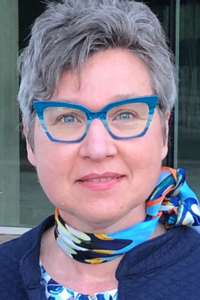During the symposium Accelerating Care and Education—Digital Health and Diabetes Support—Patient and Provider Perspectives, four presenters will discuss practical applications of various technologies that have enabled rapid changes to diabetes education and care. The two-hour session, which will include a live video question-and-answer period, begins at 2:15 p.m. ET Monday, June 28.

Kelly M. Rawlings, MS, Director of Program Design, Vida Health, will share lived experiences that illustrate how technology can bring providers and patients together in less periodic and more continuous ways. Technology—be it a flash glucose monitor, data-sharing platform, diabetes management app with health coaching, or video call allowing for a visual check of a lumpy infusion site—isn’t magic, Rawlings said, but a tool that creates connections.
“The small, randomized control trials of digital diabetes management and education platforms and programs reveal a common qualitative theme: Participants perceive feeling connected continuously with a human who cares,” Rawlings said. “It’s not necessarily the super-slick interface or a gamified experience that seem to matter, but the tech-enabled, human-care connection.”
Technology-enabled care and education aids certainly aren’t new, but the COVID-19 pandemic created many novel interventions, along with improved reimbursement for telehealth services, Rawlings noted. “Natural experiments at warp speed,” she said.
After Rawlings provides a patient’s perspective of diabetes technology, three educational leaders will discuss diabetes care and education innovation in the digital world.

Marci Butcher, RD, LN, CDCES, FADCES, Quality Diabetes Education Initiative Coordinator/Consultant, Montana Diabetes Program, Montana Department of Public Health and Human Services, will discuss Montana’s use of telehealth technology for diabetes self-management education and support (DSMES) services. The state has used telehealth to reach people in rural communities for many years, Butcher said, but COVID-19 showed decisively that telehealth provides a unique opportunity to reach people where they live, regardless of their ZIP code. But to reach telehealth’s full potential, the diabetes community must advocate for legislation that will make the telehealth waivers that were introduced during the pandemic permanently available, she said.
Butcher also will share lessons learned about delivering engaging and effective DSMES services.
“Telehealth isn’t just simply delivering the same old DSMES services through a screen,” Butcher said. “We have to embrace not just the technology piece, but delivering the meaningful experience of DSMES.”
Also during the session, Patricia Hathway Montesinos, MSN, APRN, FNP-BC, BC-ADM, CDCES, MedStar Health, will discuss the use of technology to enable transitions in care by connecting the diabetes management care team. And Ilias (Elias) Spanakis, MD, CDCES, Associate Professor, University of Maryland School of Medicine, will discuss the use of continuous glucose monitoring for hypoglycemia mitigation in the inpatient setting.
VIEW THIS PRESENTATION
Already registered?
View this presentation at ADA2021.org
Not yet registered?
Register now to access all presentations from the Virtual 81st Scientific Sessions

